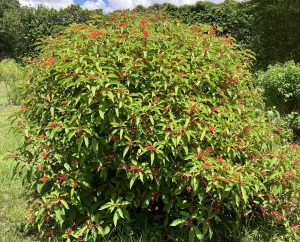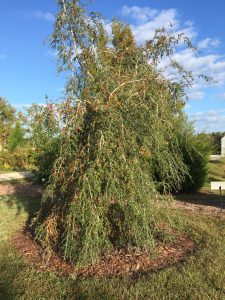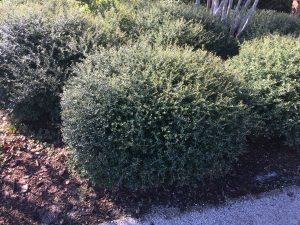
What is a nativar?
A nativar is a cultivated variety of a native plant. Nativars have the same drought-tolerance and local adaptations as straight natives, but may also have improved form or other traits desirable for urban landscapes.
A drawback of using natives is that they may not provide as much food for wildlife. Still, nativars may be a better option than non-native Florida-Friendly plants in the landscape because of their low-maintenance requirements and ecological benefits.
Nativars are good to supplement native and Florida-Friendly plants in the landscape because they are adapted to the local soil and climatic conditions with added benefit of longer flowering time, disease resistance, and aesthetically pleasing. You can purchase nativars at Florida native plant nurseries.
Let’s Review some Definitions
Native plant: A plant that has been documented to be in a region without human intervention
Cultivar: Plants that are naturally mutated and selected by humans or intentionally bred for specific traits
Nativar: A cultivar of a native plant as a result of human selection of plant traits
To determine plant status, check serval resources including the UF/IFAS Florida-Friendly Landscaping Plant Guide, the Florida Native Plant Society website, the Florida Wildflower Foundation website, and Atlas of Florida Plants.

Pros and Cons of Nativars
Nativars often have traits that are desirable in urban landscapes, such as a compact form, heat-tolerance, seed or flower modifications. Like straight native plants, they are adapted to local environments and often can thrive with minimal inputs of water, fertilizer, and pesticides.
While some natives are bred to be more floriferous or heavy fruiting, critics of nativars argue that they do not provide the same benefits to wildlife and pollinators. For example, compact cultivars may have shorter flower tubes and less nectar for pollinators. Others, such as the dwarf holly are bred to be a male cultivar or sterile female and produce no berries for birds. More research is needed to examine the benefits and drawbacks of using nativars in the landscape.
Examples of nativars commonly planted in Central Florida:
- Hamelia patens ‘Compacta’
- Ilex vomitoria ‘Pendula’
- Ilex vomitoria ‘Schillings’
- Magnolia grandiflora ‘Little Gem’
- Viburnum obovatum ‘Mrs. Schillers Delight’

Follow Us!
We have several ways to connect. Join our UF/IFAS Extension Hillsborough County
Facebook, YouTube, Instagram, Eventbrite, Blogs, and Website
If you have any questions, please contact the UF/IFAS Extension Hillsborough County at 813-744-5519 or email hillsmg@mail.ufl.edu.
The University of Florida is an Equal Opportunity Institution.
 3
3
